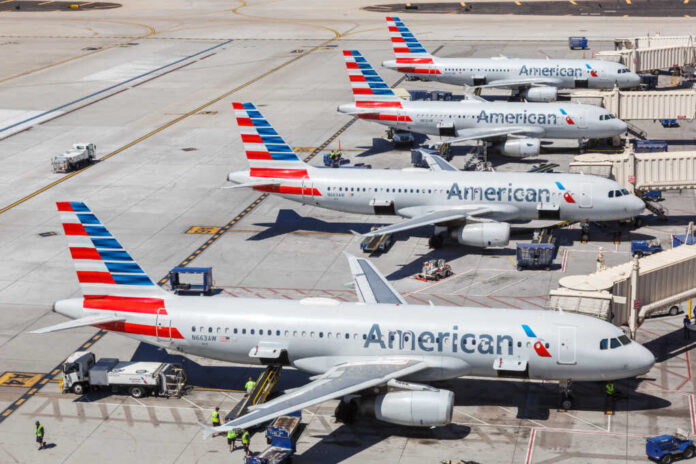CALL POLICE: Miami Flight Brawl Caught On Film

Rising passenger violence on America’s airlines now threatens basic travel safety, as a wild brawl on an American Airlines flight in Miami exposes deep flaws in how airlines and authorities handle public conduct.
Story Snapshot
- Physical fight erupted among passengers during disembarkation on American Airlines in Miami, caught on video.
- Incident highlights growing tension and safety concerns in crowded post-pandemic air travel.
- Calls for police intervention underscore severity and breakdown of orderly procedures.
- Ongoing investigation may prompt new airline policies and regulatory scrutiny.
Brawl Exposes Airline Safety Failures and Public Frustration
On August 27, 2025, a physical altercation broke out as American Airlines passengers attempted to exit a flight at Miami International Airport. Video footage captured the scene, with one traveler audibly calling for police as the situation escalated. This event took place in one of the nation’s busiest airports and has quickly circulated online, fueling national debate over passenger conduct and the ability of airlines to maintain safe, orderly travel environments. The explicit broadcast of disorder and calls for law enforcement intervention have intensified scrutiny of airline disembarkation procedures and the effectiveness of staff in de-escalating tension.
Recent years have seen a spike in passenger disputes during boarding and exiting, driven by rising flight delays, cancellations, and post-pandemic stress. Airlines have faced criticism for inconsistent enforcement of rules and lack of clear communication, leaving frustrated travelers in high-pressure situations. Miami International Airport, a major travel hub, regularly contends with large crowds and operational challenges, making it a focal point for such incidents. High-profile conflicts in air travel—often amplified by viral videos—have led to repeated law enforcement involvement and periodic reviews of airline policies. These fights not only disrupt travel but also diminish public trust in airline safety, creating ripple effects throughout the industry.
Stakeholders and Authority Challenges
The primary individuals involved include the passengers directly engaged in the fight, American Airlines staff, airport security, and local police. Passengers are often motivated by urgency and perceived unfairness, especially when disembarkation feels chaotic or improperly managed. The airline bears responsibility for passenger safety and must respond swiftly to restore order and protect its reputation. Airport security and law enforcement are called to investigate and maintain public safety when situations escalate. The Federal Aviation Administration oversees regulations and may intervene if systemic failures are identified. Authority dynamics shift rapidly, with airline staff holding power during operations but sometimes losing control to agitated travelers, requiring law enforcement to step in.
Current Status and Industry Implications
As of August 27, the brawl remains under investigation by both airport authorities and American Airlines. Despite widespread social media attention, neither the airline nor Miami International Airport has issued official statements. The ongoing probe may result in disciplinary action or formal policy changes. The immediate aftermath saw the video go viral, sparking public outcry and widespread discussion about airline safety and conduct standards. In the short term, passengers and crew faced significant disruption, and legal consequences may follow for those involved. The long-term impact could include revised procedures for disembarkation, heightened staff training in conflict management, and increased demand for accountability within the industry.
Broader effects are felt across the flying public, with economic costs tied to possible legal action, enhanced security measures, and reputational damage to airlines. Socially, repeated incidents erode faith in airline safety and passenger behavior. Politically, such events often prompt regulatory reviews and calls for legislative action to better protect travelers and uphold public order. Airlines may be forced to revisit training, transparency, and procedural clarity to address the growing demand for safer, more reliable air travel.
Expert Perspectives on Conflict and Solutions
Aviation safety experts argue that rising altercations reflect deeper stressors in today’s travel landscape, including overcrowding, delays, and a lack of clear communication. Academic studies suggest that effective staff training in de-escalation and proactive communication can lower the risk and severity of such incidents. Commentators remain divided, with some advocating stricter penalties for unruly passengers, while others call for systemic changes to airline operations. Coverage from major outlets provides balanced context, confirming the incident and its broader implications for passenger management and industry standards. The consensus is clear: without significant improvement in conflict resolution and regulatory oversight, similar outbreaks are likely to persist, threatening the safety and confidence of American travelers.


